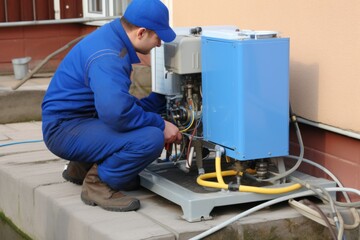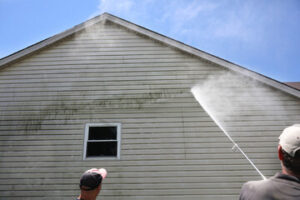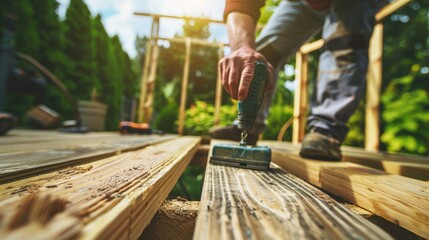You should only let a professional repair contractor service your air conditioning system. Tinkering with your AC can cause more damage than it solves, and may require costly parts replacement or even an entire system overhaul.

In addition to scheduling regular maintenance checks, you should always check the following issues before calling for AC Repair Round Rock TX.
Your air conditioning system relies on the thermostat to control its output and maintain your home’s comfort level. But just like any other machine, your thermostat can have issues that need to be addressed. Understanding and recognizing the warning signs of thermostat problems can help you save money, ensure a comfortable home environment and avoid more serious problems in the future.
Inconsistent temperature readings are a key indicator that your thermostat is malfunctioning. This can lead to inefficient cooling and a lack of consistent comfort across different rooms. Several things can cause inconsistency, including placing your thermostat near heat sources, incorrect wiring or the internal components wearing down over time.
If your AC is exhibiting symptoms of short cycling, it’s time to call an expert for repair. This is when your system repeatedly turns on and off in shortened spurts, which can affect temperature and humidity control, increase energy costs and cause premature wear on your unit.
A common cause of short cycling is a dirty filter, which can be easily corrected by simply changing it. However, if you’ve already done this and your AC continues to exhibit signs of short cycling, it’s likely due to a more severe problem with the system that requires professional repair service.
Another warning sign of a thermostat issue is if it no longer responds to your commands. You can perform a simple test to see if this is the case by replacing its batteries or checking whether the circuit breaker has been tripped. If these tests don’t resolve the issue, you may need to replace the thermostat itself.
If your thermostat is constantly showing an error message or no longer has a backlight, it’s time to call for professional assistance. These symptoms indicate a problem with your unit’s sensor, internal wiring or programming. In some cases, it may be possible to fix these issues with some troubleshooting steps or a simple reset, but more severe problems will require professional replacement of the thermostat.
A malfunctioning thermostat can also lead to inefficient cooling and high energy bills. This is because the thermostat isn’t translating your home’s heating and cooling needs correctly, which puts a strain on your system and increases energy usage.
Capacitor Issues
A capacitor is an essential electrical component that provides the initial jolt of energy needed to start your air conditioner’s motors and compressor. It is the AC unit’s “jump starter” and functions much like a battery, storing energy and then releasing it as needed to keep the system running. A bad capacitor can lead to a host of HVAC issues, so it’s important to have your AC repair professional take a look if you think you might have a problem.
One of the most obvious signs that a capacitor is going bad is when your air conditioner starts to produce hot rather than cold air. A capacitor is responsible for supplying the extra power that the system needs to operate properly, so if it starts producing hot air, that’s a clear sign of trouble. Another symptom of a bad capacitor is if it produces an unusual humming or buzzing sound while it’s running. Whether you hear this noise coming from inside the access panel or outside your home, it’s best to call an AC service expert right away for an inspection and possible replacement.
Failing capacitors also force the rest of your air conditioning system to work harder than necessary, which can cause it to shut down frequently or even shut off altogether. This additional strain on your cooling equipment can add up quickly, and it will be reflected in your next energy bill.
You may also notice that your air conditioner takes a lot longer than usual to start up when you hit the power button. This is a direct result of the capacitor struggling to supply enough power to the motors and compressor.
Capacitors are available in different sizes based on their microfarad ratings, and you’ll need to replace your AC unit’s old capacitor with a new one that has the same voltage rating as the previous one. Fortunately, replacing a capacitor is a relatively simple process that your technician can complete in less than an hour. Once the old capacitor is removed and replaced, your technician will test it to ensure that the new capacitor is functioning properly.
Clogged Air Filters
The air filter is a vital part of your HVAC system. It filters out harmful airborne particles such as dust, dander, pollen, mold, chemicals and odors. This prevents them from circulating throughout your home, which can cause irritation and lead to illness. It also helps keep your furnace working at optimal efficiency, which saves on energy costs.
However, every air filter will eventually get clogged. This happens due to the amount of dirt and dust that accumulates on the surface. But sometimes the occurrence of a dirty air filter is more rapid than usual and can lead to serious problems with your AC unit.
If your air filter gets too clogged, it restricts the flow of cool air into your house. This can lead to a number of problems, including:
Insufficient cooling: Clogged filters limit the flow of air from your return vents into the indoor unit, which leads to insufficient home cooling.
High energy bills: Clogged filters force the system to work harder than normal to keep your home cooled, which results in higher electricity (or gas) bills.
A clogged air filter can also cause your evaporator coil to freeze over, which is very damaging to the unit. This happens because refrigerant cycles over the evaporator coil to absorb heat, but when there is a clogged filter in place, it stops the airflow over the evaporator coil, and it simply freezes over.
It’s also important to change your air filter regularly to keep it as clean as possible. Keeping it clean will help extend the lifespan of your furnace and air conditioner, saving you money on expensive repairs in the future. Additionally, if you notice any strange rattling or buzzing sounds coming from your AC unit, contact a professional right away. It’s never a good idea to let these issues go unchecked, as they can lead to even more costly issues down the road. For more information about air conditioning repairs and preventative maintenance, call McHale’s today. We are a full-service AC repair company serving Levittown, Bucks County and the surrounding area.
Condenser Fin Issues
The condenser fins are a key component of the air conditioning system. They help the coils to dissipate heat, and are responsible for turning the superheated vapor refrigerant back into a liquid. If the fins are damaged or clogged, the refrigerant will not cool as well. The fins are prone to damage due to outside factors like wind, birds, and lawnmowers, but can also be affected by internal issues such as improper installation or age-related wear and tear.
Heavily bent or damaged fins reduce the surface area of the coils, which means that the coils aren’t able to absorb as much heat from the air. This leads to poor efficiency and ice buildup, as the system has to work even harder to keep the house cool. If you see that your fins are bent, it is a good idea to gently straighten them with a flat head screwdriver without applying too much pressure. You should also remove any debris that may be obstructing them. You can do this by shutting off the power to the unit and removing the access panel to the outside, as well as the wire grille.
Another common AC repair issue is a dirty condenser coil. Dirty coils can affect the efficiency of the condenser, causing the refrigerant to overheat and eventually shut down as a safety mechanism. Coils can be cleaned using a no-rinse coil cleaner, but you should always make sure that the unit is turned off before cleaning.
A dirty condenser can also lead to a number of other problems, including overheating and leaks. Overheating can cause the evaporator coil to freeze, and leaks can be caused by damage or corrosion of the seals. Regular maintenance and routine system inspections can catch these problems early on and prevent them from becoming serious.








